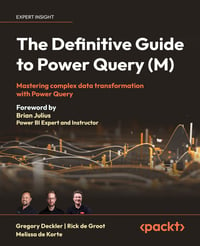🔹 Reduce cost and improve your AI workloads: This blog provides five practical tips to optimize AI workloads on Google Cloud, covering platform selection, inference startup time, storage solutions, resource reservations, and custom disk images. It helps developers improve efficiency, reduce costs, and streamline AI model deployment and training processes.
🔹 The Impact of GenAI and Its Implications for Data Scientists: Anthropic’s study on Claude.ai conversations reveal how GenAI is transforming workplaces, especially in data science. Rather than replacing jobs, GenAI enhances productivity by augmenting tasks. The blog emphasizes the importance of adaptability, critical thinking, and collaboration skills in the evolving AI landscape.
🔹 Mastering Prompt Engineering with Functional Testing: A Systematic Guide to Reliable LLM Outputs: Functional testing in prompt engineering provides a structured approach to optimizing LLM outputs. By automating validation, running multiple iterations, and using algorithmic scoring, this method enhances reliability, reduces trial-and-error, and ensures consistent, accurate responses for complex AI workflows and tasks.
🔹 Effortless Spreadsheet Normalisation With LLM: Large Language Models (LLMs) automate spreadsheet normalization by analyzing structure, estimating schemas, and generating transformation code. This improves data quality, tidiness, and usability. A structured workflow ensures efficiency, accuracy, and adaptability, enabling seamless machine-readable formats for better insights and analysis.
🔹2026 Will Be the Year of Data + AI Observability: The blog observes that 2026 will be the tipping point for data + AI observability, as enterprise AI moves from experimentation to large-scale deployment. Key challenges include data readiness, system sprawl, feedback loops, and cost concerns. Without a standardized architecture, teams struggle to maintain reliability while integrating structured and unstructured data, AI models, and SaaS systems. Observability must be end-to-end, covering data, system performance, and AI outputs. Organizations with strong foundations in data reliability will gain a competitive edge, while those lacking observability risk inefficiency, poor AI performance, and potential failure in an evolving AI landscape.
🔹 Ingest data from Google Analytics 4 and Google Sheets to Amazon Redshift using Amazon AppFlow: This blog explains how to ingest data from Google Analytics 4 (GA4) and Google Sheets into Amazon Redshift using Amazon AppFlow. It covers setting up data flows, configuring authentication, and establishing a seamless integration for efficient data analysis in Redshift.
 United States
United States
 Great Britain
Great Britain
 India
India
 Germany
Germany
 France
France
 Canada
Canada
 Russia
Russia
 Spain
Spain
 Brazil
Brazil
 Australia
Australia
 South Africa
South Africa
 Thailand
Thailand
 Ukraine
Ukraine
 Switzerland
Switzerland
 Slovakia
Slovakia
 Luxembourg
Luxembourg
 Hungary
Hungary
 Romania
Romania
 Denmark
Denmark
 Ireland
Ireland
 Estonia
Estonia
 Belgium
Belgium
 Italy
Italy
 Finland
Finland
 Cyprus
Cyprus
 Lithuania
Lithuania
 Latvia
Latvia
 Malta
Malta
 Netherlands
Netherlands
 Portugal
Portugal
 Slovenia
Slovenia
 Sweden
Sweden
 Argentina
Argentina
 Colombia
Colombia
 Ecuador
Ecuador
 Indonesia
Indonesia
 Mexico
Mexico
 New Zealand
New Zealand
 Norway
Norway
 South Korea
South Korea
 Taiwan
Taiwan
 Turkey
Turkey
 Czechia
Czechia
 Austria
Austria
 Greece
Greece
 Isle of Man
Isle of Man
 Bulgaria
Bulgaria
 Japan
Japan
 Philippines
Philippines
 Poland
Poland
 Singapore
Singapore
 Egypt
Egypt
 Chile
Chile
 Malaysia
Malaysia


















